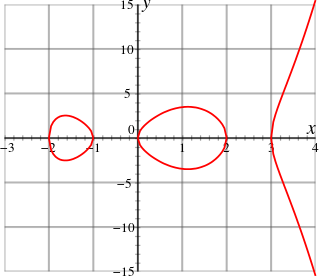Galois representations in number theory
Many objects that arise in number theory are naturally Galois representations. For example, if L is a Galois extension of a number field K, the ring of integers OL of L is a Galois module over OK for the Galois group of L/K (see Hilbert–Speiser theorem). If K is a local field, the multiplicative group of its separable closure is a module for the absolute Galois group of K and its study leads to local class field theory. For global class field theory, the union of the idele class groups of all finite separable extensions of K is used instead.
There are also Galois representations that arise from auxiliary objects and can be used to study Galois groups. An important family of examples are the ℓ-adic Tate modules of abelian varieties.
Artin representations
Let K be a number field. Emil Artin introduced a class of Galois representations of the absolute Galois group GK of K, now called Artin representations. These are the continuous finite-dimensional linear representations of GK on complex vector spaces. Artin's study of these representations led him to formulate the Artin reciprocity law and conjecture what is now called the Artin conjecture concerning the holomorphy of Artin L-functions.
Because of the incompatibility of the profinite topology on GK and the usual (Euclidean) topology on complex vector spaces, the image of an Artin representation is always finite.
ℓ-adic representations
Let ℓ be a prime number. An ℓ-adic representation of GK is a continuous group homomorphism ρ : GK → Aut(M) where M is either a finite-dimensional vector space over Qℓ (the algebraic closure of the ℓ-adic numbers Qℓ) or a finitely generated Zℓ-module (where Zℓ is the integral closure of Zℓ in Qℓ). The first examples to arise were the ℓ-adic cyclotomic character and the ℓ-adic Tate modules of abelian varieties over K. Other examples come from the Galois representations of modular forms and automorphic forms, and the Galois representations on ℓ-adic cohomology groups of algebraic varieties.
Unlike Artin representations, ℓ-adic representations can have infinite image. For example, the image of GQ under the ℓ-adic cyclotomic character is . ℓ-adic representations with finite image are often called Artin representations. Via an isomorphism of Qℓ with C they can be identified with bona fide Artin representations.
Mod ℓ representations
These are representations over a finite field of characteristic ℓ. They often arise as the reduction mod ℓ of an ℓ-adic representation.
Local conditions on representations
There are numerous conditions on representations given by some property of the representation restricted to a decomposition group of some prime. The terminology for these conditions is somewhat chaotic, with different authors inventing different names for the same condition and using the same name with different meanings. Some of these conditions include:
- Abelian representations. This means that the image of the Galois group in the representations is abelian.
- Absolutely irreducible representations. These remain irreducible over an algebraic closure of the field.
- Barsotti–Tate representations. These are similar to finite flat representations.
- Crystabelline representations
- Crystalline representations.
- de Rham representations.
- Finite flat representations. (This name is a little misleading, as they are really profinite rather than finite.) These can be constructed as a projective limit of representations of the Galois group on a finite flat group scheme.
- Good representations. These are related to the representations of elliptic curves with good reduction.
- Hodge–Tate representations.
- Irreducible representations. These are irreducible in the sense that the only subrepresentation is the whole space or zero.
- Minimally ramified representations.
- Modular representations. These are representations coming from a modular form, but can also refer to representations over fields of positive characteristic.
- Ordinary representations. These are related to the representations of elliptic curves with ordinary (non-supersingular) reduction. More precisely, they are 2-dimensional representations that are reducible with a 1-dimensional subrepresentation, such that the inertia group acts in a certain way on the submodule and the quotient. The exact condition depends on the author; for example it might act trivially on the quotient and by the character ε on the submodule.
- Potentially something representations. This means that the representations restricted to an open subgroup of finite index has some specified property.
- Reducible representations. These have a proper non-zero sub-representation.
- Semistable representations. These are two dimensional representations related to the representations coming from semistable elliptic curves.
- Tamely ramified representations. These are trivial on the (first) ramification group.
- Trianguline representations.
- Unramified representations. These are trivial on the inertia group.
- Wildly ramified representations. These are non-trivial on the (first) ramification group.





